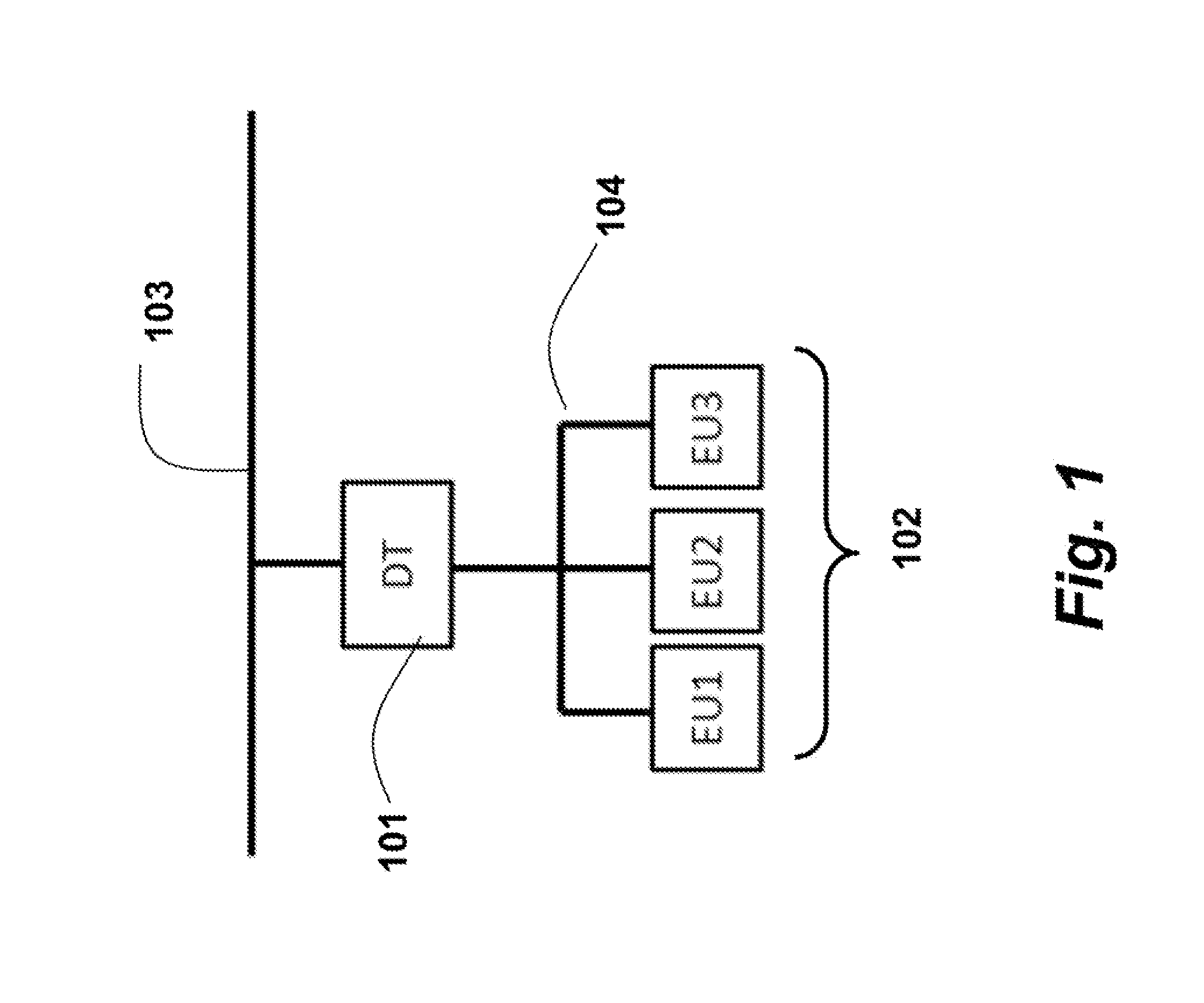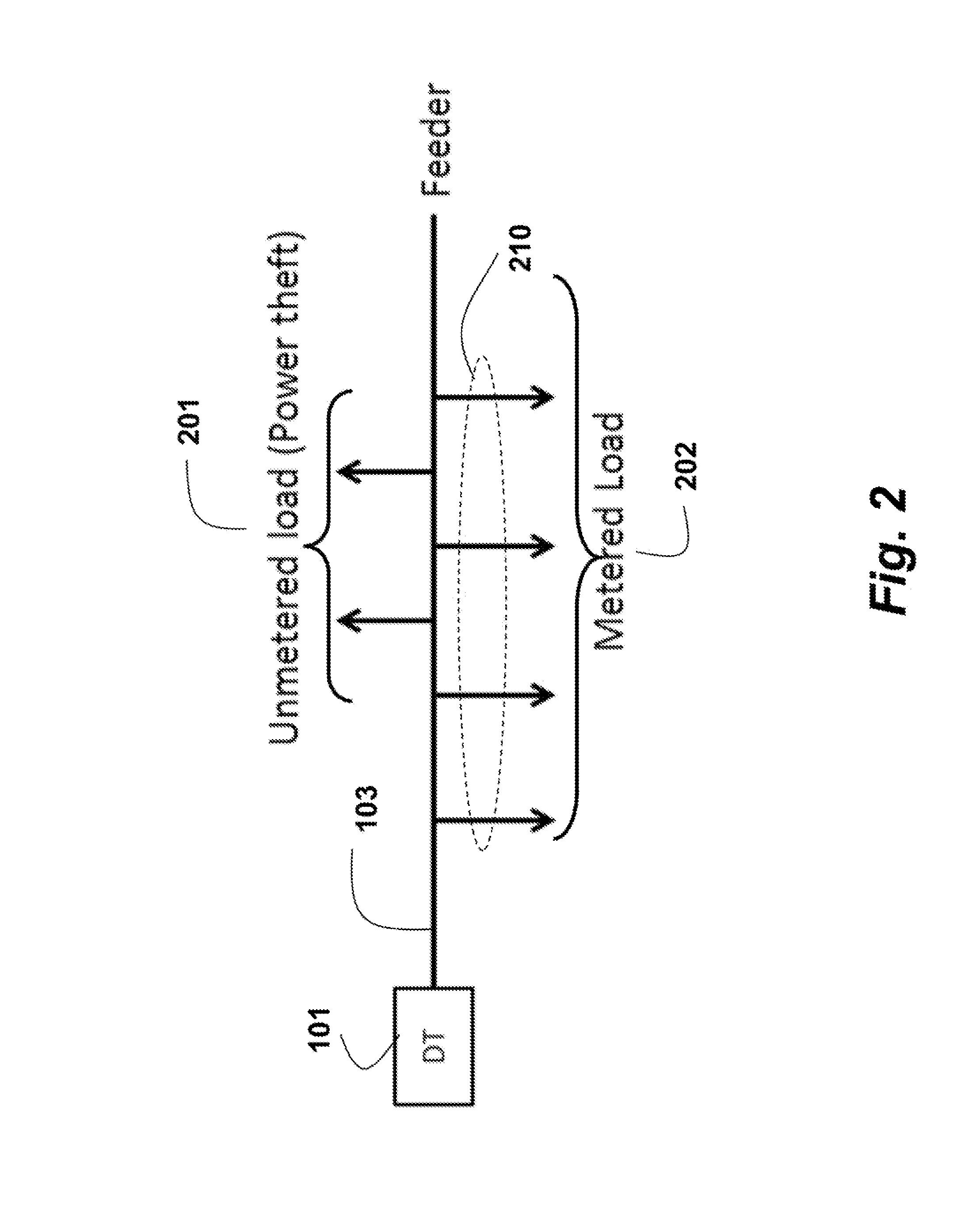Method for Detecting Power Theft in a Power Distribution System
a technology of power distribution system and detection method, which is applied in the direction of electric devices, instruments, transportation and packaging, etc., can solve the problems of unavoidable technical losses, illegal consumption of power cannot be measured, and billed, and achieve non-technical losses. , the effect of accurate estimation of technical losses
- Summary
- Abstract
- Description
- Claims
- Application Information
AI Technical Summary
Benefits of technology
Problems solved by technology
Method used
Image
Examples
Embodiment Construction
[0019]As shown in FIG. 1, the embodiments of our invention detect non-technical losses (NTL) in a branch of a power distribution system including a distribution transformer (DT) 101 connected to a sub-station by means of a feeder 103, and a number of consumers (end users (EU1, EU2, EU3)) 102 by a set of lines 104.
[0020]In general, the connection pattern is not known. The most typical pattern connects the DT to the consumers at various locations along the feeder. The exact locations are unknown, and the resistances of the line between these locations are also unknown.
[0021]FIG. 2 shows a branch with unmetered loads 201, and metered loads 202 connected via a subset 210 of the lines.
[0022]In the absence of detailed information about the actual circuit of the branch, we make a simplifying assumption that it has a specific topology and connectivity pattern shown in FIG. 3. In FIG. 3, each consumer (EU) is connected indirectly to the DT through a smart meter 301. The phases A, B, and C ar...
PUM
 Login to View More
Login to View More Abstract
Description
Claims
Application Information
 Login to View More
Login to View More - R&D
- Intellectual Property
- Life Sciences
- Materials
- Tech Scout
- Unparalleled Data Quality
- Higher Quality Content
- 60% Fewer Hallucinations
Browse by: Latest US Patents, China's latest patents, Technical Efficacy Thesaurus, Application Domain, Technology Topic, Popular Technical Reports.
© 2025 PatSnap. All rights reserved.Legal|Privacy policy|Modern Slavery Act Transparency Statement|Sitemap|About US| Contact US: help@patsnap.com



